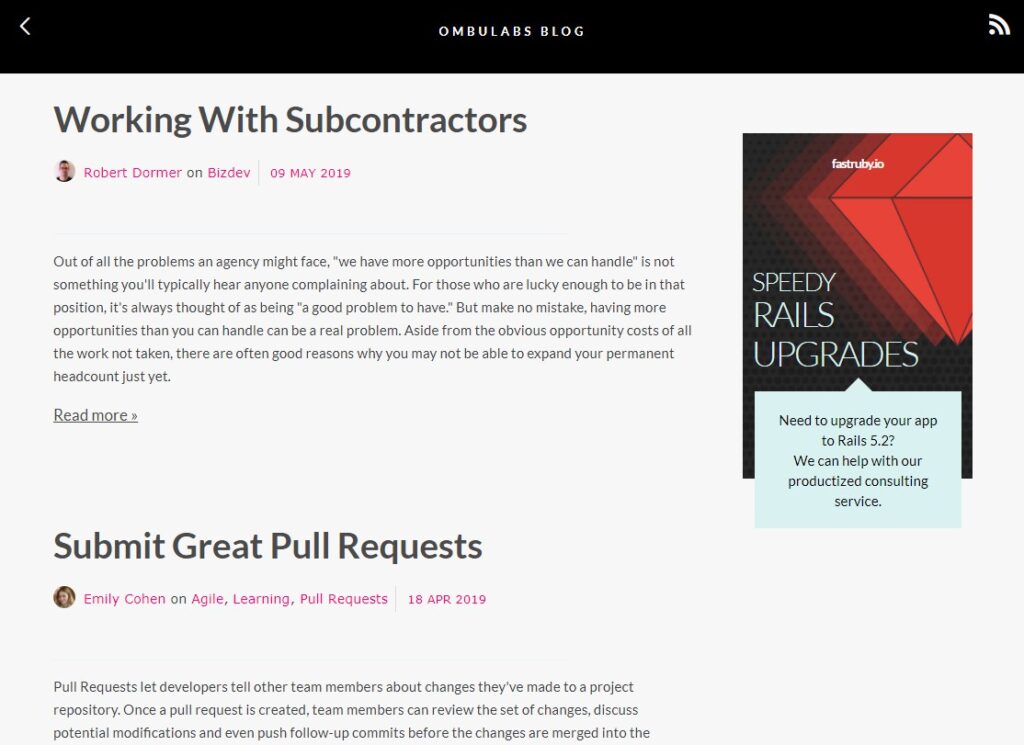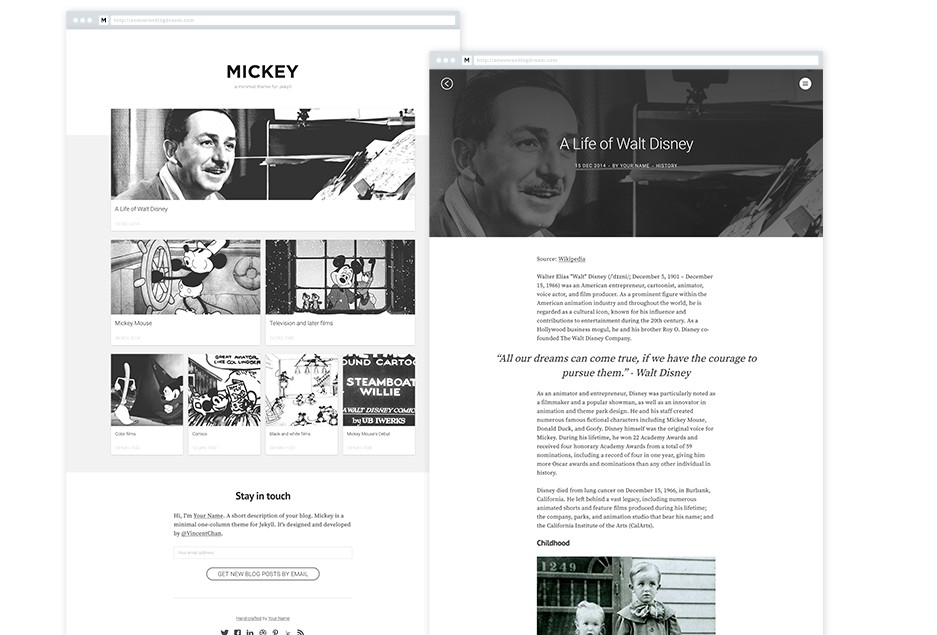Ombulabs Blog
Blog for the Ombulabs team using Jekyll as the blog-engine.
Installation
To get the blog up and running in a local environment, follow the steps below:
- Clone the repository:
git clone [email protected]:ombulabs/blog.ombulabs.com.git - Setup
.ruby-versionif you’re using RVM. - Run
bundle installto install Jekyll and other dependencies. - Start the blog by running
jekyll serve.
You can then access the blog at localhost:4000 (default port).
By default, the auto-regeneration is enabled, so any changes on HTML, CSS or posts will be auto-regenerated/compiled and viewable by refreshing the browser.
Creating a new post
In order to create a new post, you can copy one of the existing posts (.markdown files) in /_posts/ and change the filename to suit your post by modifying the date and title.
After saving the new file to /_posts/, you will see the post generated as HTML under /_site/ and published to your local blog if it’s running.
To edit the post, first change the YAML variables post, date and categories. You can also change layout to use one of the layouts under /_layouts/ (only post and page exist for now).
Then, you can begin writing your post by replacing the existing copy beneath. NOTE: It should be written using Markdown syntax.
After you’re done, simply save the file, and (optionally) run the blog locally if it’s not already running to preview it.
Publishing a post
In order to publish your newly created post, simply create a branch and make a Pull Request. When the branch is merged and deployed, the post will be displayed in the blog.
Editing a post
To edit a post, simply edit the content for one of the markdown files and the HTML for the post will regenerate.
Looking for Support or Custom Solutions?
We specialize in creating stunning, fully-customized Jekyll websites tailored to your needs.
If you need assistance with setup, customization, or support, don't hesitate to contact us.
CONTACT US
